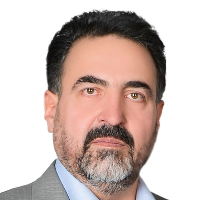Designing of Human Resource Flexibility Pattern
Author(s):
Article Type:
Research/Original Article (دارای رتبه معتبر)
Abstract:
Purpose
This research was conducted to design a human resource flexibility model with the fuzzy TISM approach at Lorestan University.Method
The research is based on a practical purpose and in terms of method, it is a mixed quantitative and qualitative research. The data have been analyzed through fuzzy total interpretive structural modeling. The statistical population of the research in the qualitative and quantitative part was a group of experts, consisting of professors from the Faculty of Economics and Management of Lorestan University, whose orientation and expertise were in the field of human resources management. The flexibility indicators of human resources were identified through theoretical literature and interviews with 7 experts in this field who were selected as a sample using the purposeful sampling method and based on the theoretical adequacy principle. As a result, 12 indicators were extracted. In the quantitative part of the questionnaire, the sample completed pairwise comparisons of indicators. Then, the interpretive structural modeling method was used in the fuzzy environment to create a connection and sequence between the factors and provide a structural model. Results
The leveling of human resource flexibility indicators was done in thirteen stages, finally forming the human resource flexibility modelKeywords:
Language:
Persian
Published:
Management Studies in Development & Evolution, Volume:33 Issue: 113, 2024
Pages:
1 to 44
https://www.magiran.com/p2809632
سامانه نویسندگان
مقالات دیگری از این نویسنده (گان)
-
Designing a Model of Political Bribery in the Selection of Public Organization Manager (A Grounded Theory Approach with an emergent-Glaserian Perspective)
Hossein Azimi *, Hojjat Vahdati, Amirhooshang Nazarpoori,
Journal of Public Administration Perspective, -
Designing an organizational whistle-blowing model in government organizations(Qualitative approach: theme analysis)
Shahram Pourmohammad, Mohammadreza Jaber Ansari *, Yousef Mohammadi Moghadam, , Adel Salvati
Transformation Managemet Journal,



